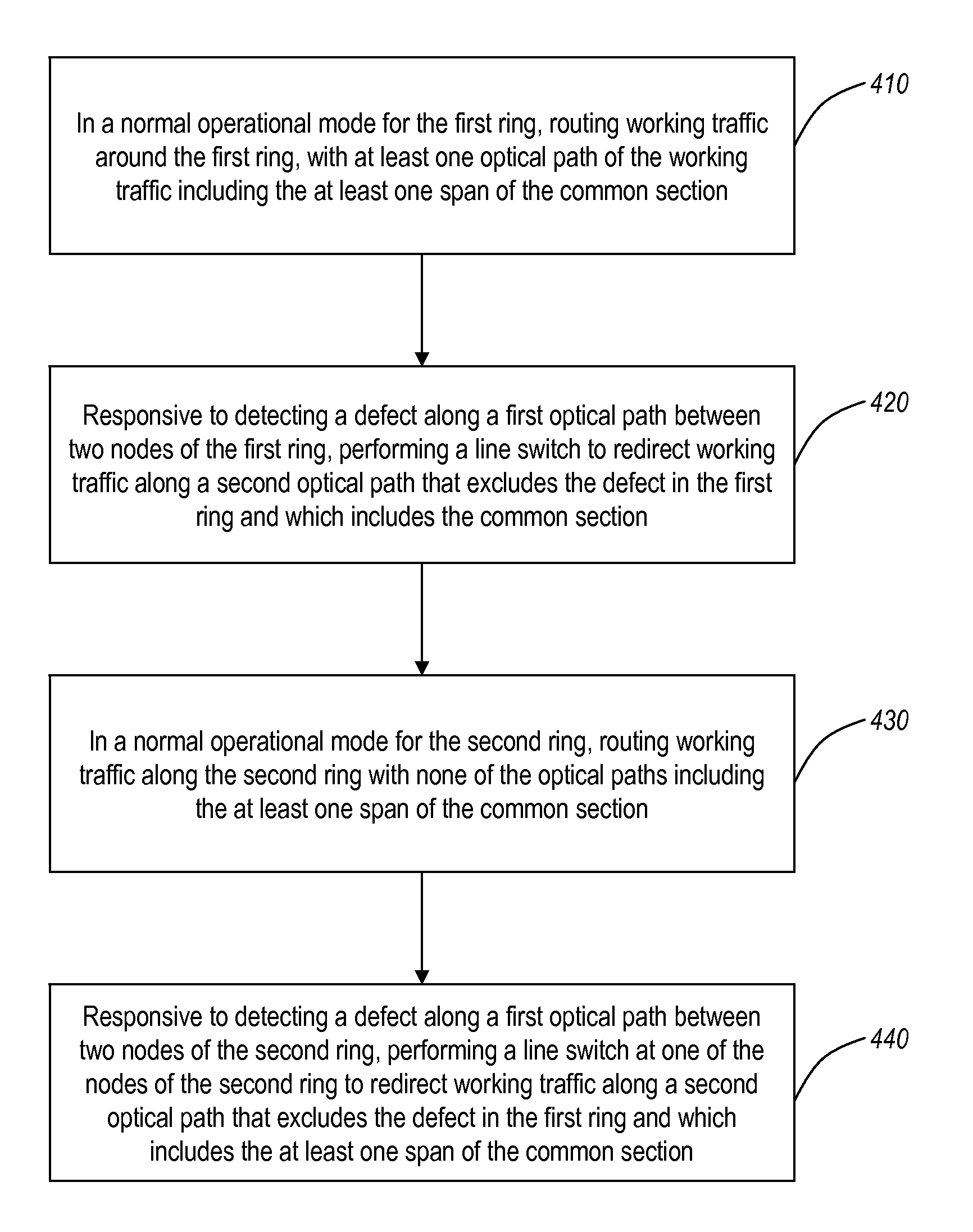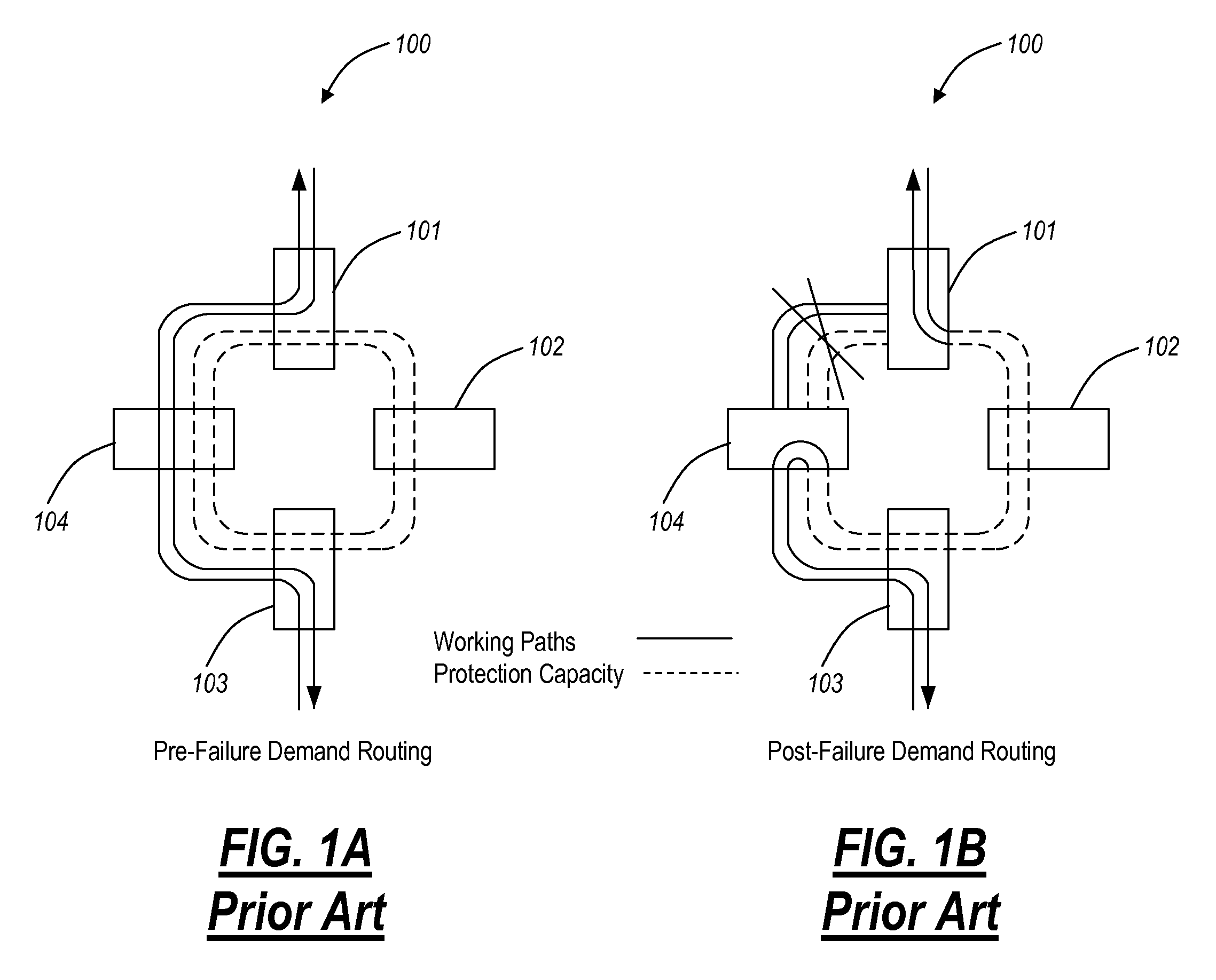Bidirectional line switched partial rings, mesh networks, and methods of operation
a partial ring, bidirectional technology, applied in the field of optical ring and mesh network, can solve the problems of unused bandwidth unused transponder and transport fiber, and difficulty in implementing an arbitrary mesh topology in a cost-effective manner, so as to achieve the same level of network reliability and reduce network build-out costs
- Summary
- Abstract
- Description
- Claims
- Application Information
AI Technical Summary
Benefits of technology
Problems solved by technology
Method used
Image
Examples
Embodiment Construction
[0070]The present invention describes partial bi-directional line switched rings and a bi-directional line switched mesh (BLSM) network in which the mesh is segmented into multiple bi-directional line switched ring (BLSR) subnetworks. This allows two or more of the BLSRs may share protection bandwidth along a common section. These rings may be each be either FULL or PARTIAL rings depending on the amount of fiber available.
Partial Rings
[0071]FIG. 8 shows a high-level view of a PARTIAL 4 node 4F-BLSR network 800 with four nodes 801, 802, 803 and 804 connected together with four fibers on three spans and two fibers on one.
[0072]It is to be understood that the terms “partial network”, and “partial ring” refer to a ring network in which at least one of the working spans is missing, not configured, not provisioned, or otherwise not part of the ring. Similarly, the network elements or nodes that make up such a partial ring have two distinct varieties: a symmetrical ring node in which the w...
PUM
 Login to View More
Login to View More Abstract
Description
Claims
Application Information
 Login to View More
Login to View More - R&D
- Intellectual Property
- Life Sciences
- Materials
- Tech Scout
- Unparalleled Data Quality
- Higher Quality Content
- 60% Fewer Hallucinations
Browse by: Latest US Patents, China's latest patents, Technical Efficacy Thesaurus, Application Domain, Technology Topic, Popular Technical Reports.
© 2025 PatSnap. All rights reserved.Legal|Privacy policy|Modern Slavery Act Transparency Statement|Sitemap|About US| Contact US: help@patsnap.com



